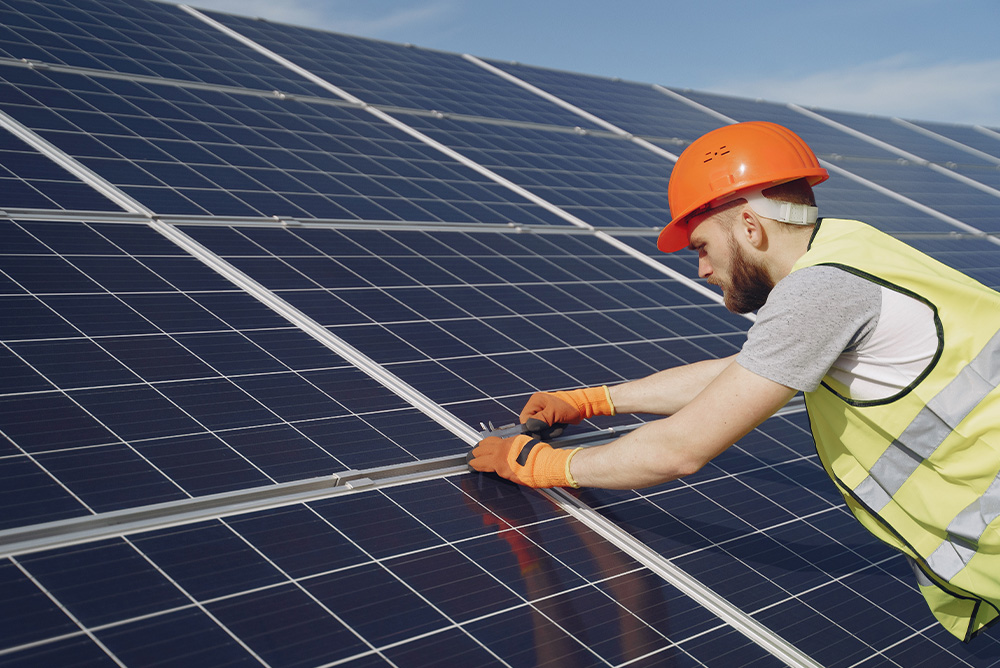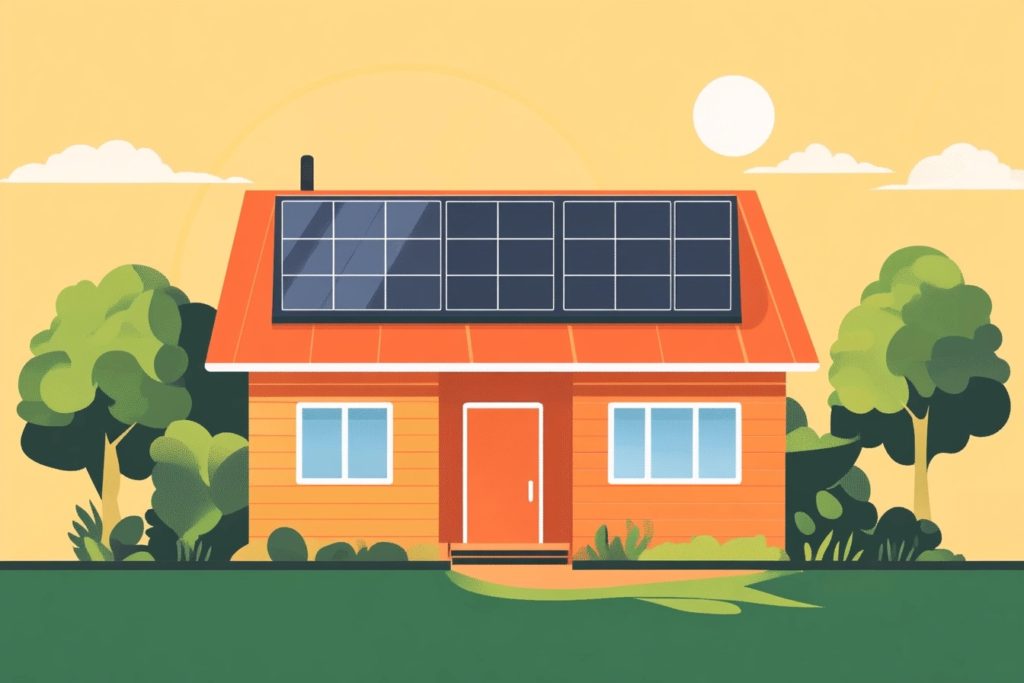Are you ready to make the leap into residential solar energy production but you’re not sure how the process works? You’ve come to the right place! A new solar array installation — or even just adding solar panels to an existing array — has several important steps, as well as some crucial questions you’ll need to answer about your energy needs and production capacity.
That said, there are some basic guidelines that we can walk you through before you contact a reputable local solar installer to handle the specifics of your solar array installation. Let’s discuss some universal aspects of residential solar panel array installation and determine how a solar array can help your home achieve energy independence.
Definition of a Solar Array
The solar panel array is a vital part of any residential solar system as without it, your system would simply not generate any energy. “Solar array” is a term that typically refers to a group of solar panels, linked together into a cohesive system. Working with the solar inverter (and the solar battery, if you choose to install one), the solar array generates energy in a direct current (DC), which it then sends to the inverter for conversion to alternating current (AC), which you can easily use to power your home.
Types of solar arrays
Before we move on, we’ll briefly mention that the term “solar array” is also sometimes used to discuss massive photovoltaic power stations or solar farms. However, for the purposes of this guide, “solar array” solely refers to a collection of panels used for residential energy generation.
Location and Capacity: The Details of Solar Array Installation
There is a lengthy list of variables to consider when planning your own solar panel array. The size of your home, where it’s located, the angle and direction of your roof, your family’s daily energy usage, how much shade your property receives — this is honestly just the start of the list of factors that go into determining how much energy you need your system to generate, or where to install it. In this section, we’ll dig into the answers to three commonly asked questions about the location and capacity of residential solar arrays.
How many panels are necessary to build a residential solar array?
We always recommend that homeowners install enough of a solar panel array to no longer require energy from the utility company, or at least to significantly minimize the occurrences where you need to pull power from the grid. After all, what’s the point if you’re still paying an energy bill every month? A good way to figure this out is to analyze your recent utility bills to determine how much energy you’ll need your solar array to produce.
How does my home’s location alter the equation?
That said, there are other variables that can significantly affect the number of panels you need. Most importantly, where you live can have a big impact, as some parts of the U.S. (like the Southwest) receive nearly twice as much daily direct sunlight as other regions (such as the Pacific Northwest).
In addition, the direction and angle your panels face are important as well. For most people, you’ll want your panels facing south at a roughly 35-degree angle. Some homeowners will require west-facing panels, while others will need a greater angle of installation. To nail down an exact figure for how many solar panels you need in your array based on your energy needs and location, speak with a reputable solar installer.
Should I install multiple solar arrays or just one?
For the majority of homes, you will be able to get by with one solar array. Installing more than one solar panel array can get quite costly due to increased installation expenses, and most homes don’t need two or more arrays anyway. However, if you’re adding solar panels to an existing array, or if your roof doesn’t have enough space for all of the panels you need in the same location, there are times when multiple solar array installation is a necessity.
How to Acquire and Install Your Own Solar Array
At this point, you’re probably thinking about installing a solar array of your own. And who could blame you? Our most important piece of advice when installing a solar energy system for your home is that you should only work with reputable, experienced local installers. In addition, we recommend getting a rough estimate of your electricity needs before contacting an installer. You can use the National Renewable Energy Laboratory’s handy PVWatts Calculator to get an estimate to use as a benchmark for quotes from installers.
In Conclusion
If you still have questions about installing a solar array, give LGCY Power a call at 855.353.4899. Our expert representatives have a wealth of knowledge to draw upon, and they can help you answer many of the tough questions you might have. In addition, we can send one of our reputable, experienced solar installers to your home to do an in-person analysis of your solar energy needs.
Solar array installation isn’t always easy, but with a partner like LGCY Power in your corner, the process will feel a whole lot simpler.





